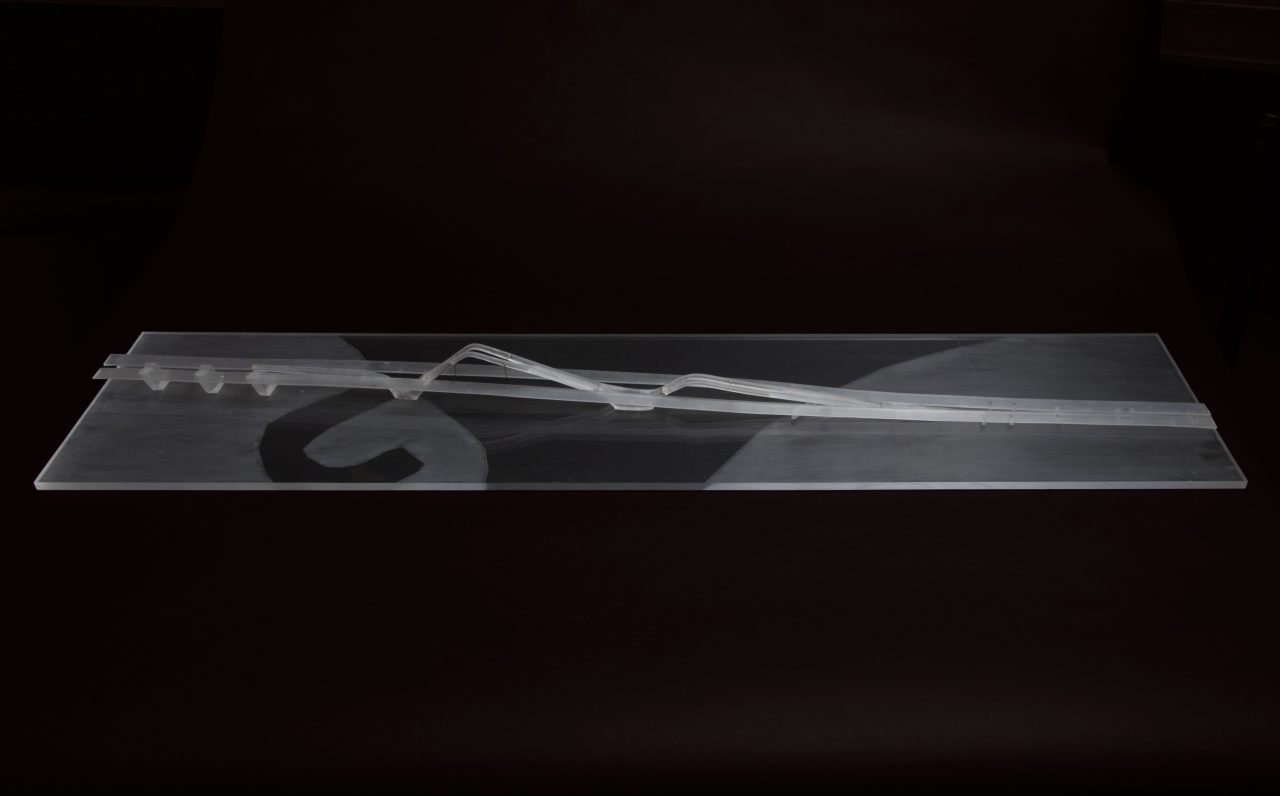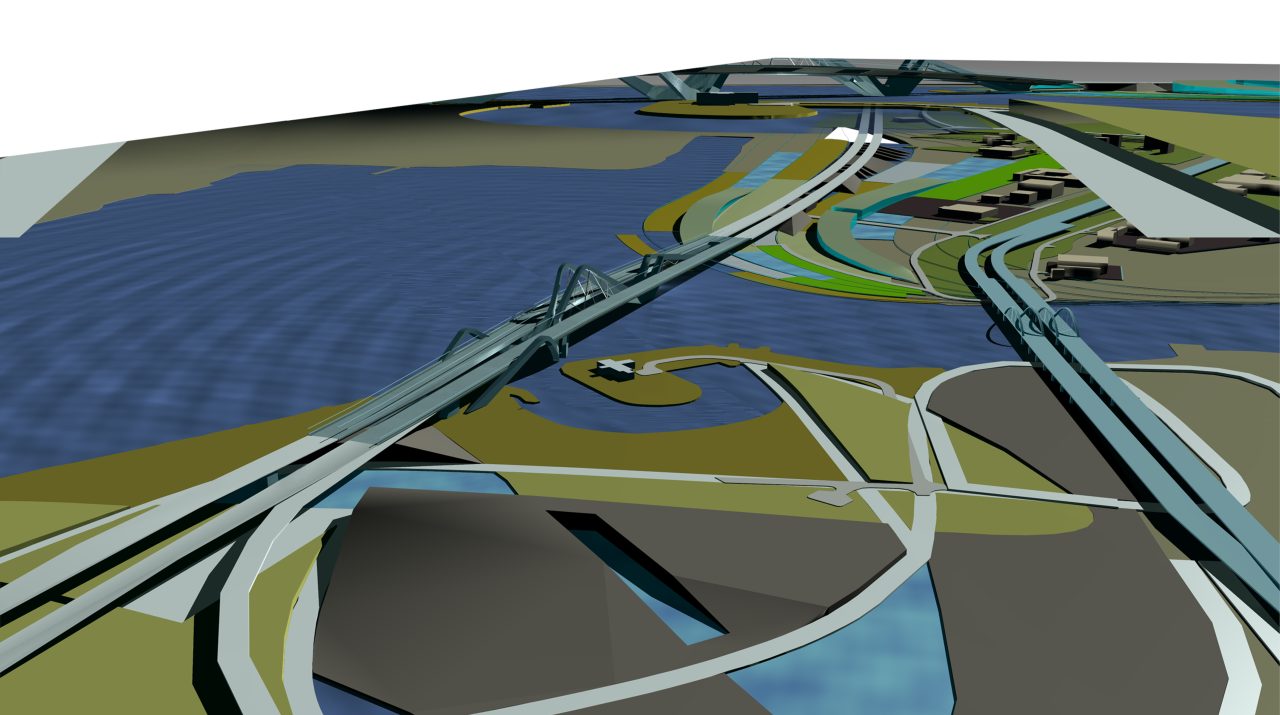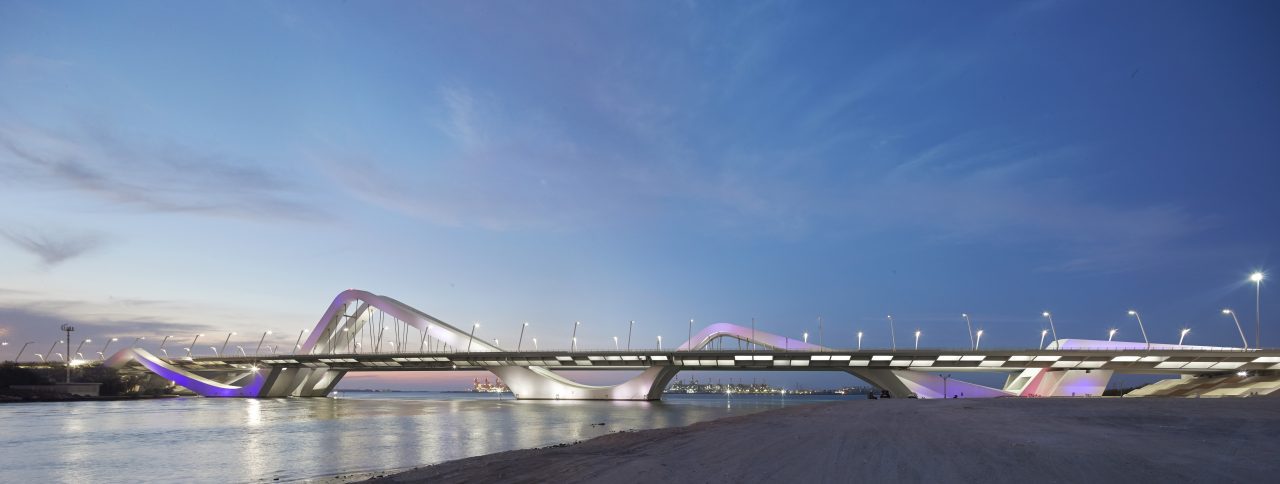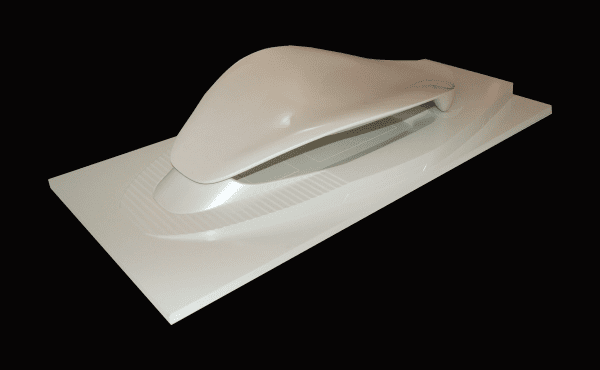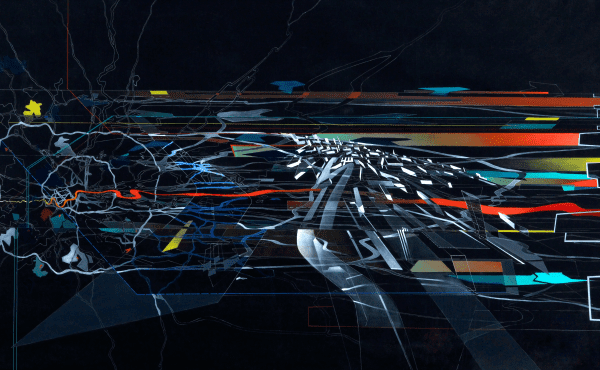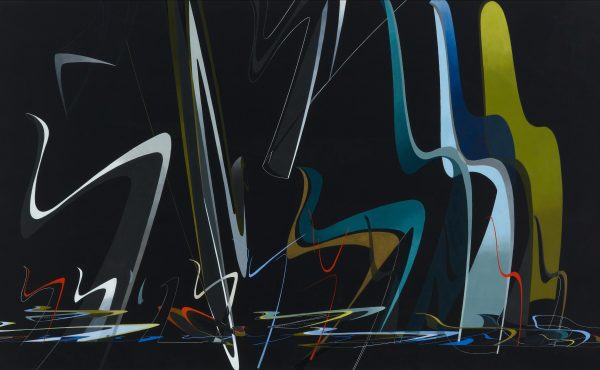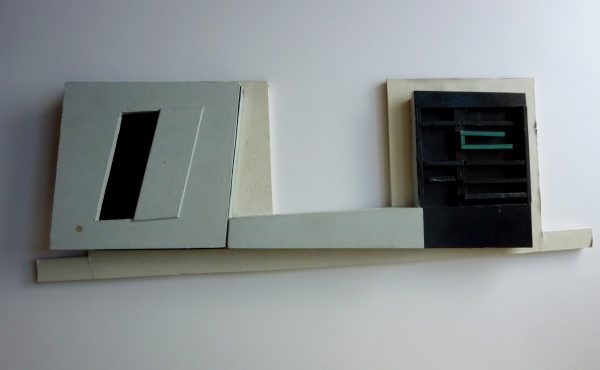The Sheikh Zayed Bridge (1997-2010) was Zaha Hadid Architects’ first built project in the Middle East. Commissioned during a period of rapid economic growth and urban expansion in the UAE, the bridge was conceived as both a vital piece of infrastructure and a landmark of national ambition. Spanning the Maqta Channel to connect the island of Abu Dhabi with the mainland, the project merges structural innovation with forms inspired by the region’s sand dunes, transforming the highway system at the city’s gateway. Its inspiration from the local natural landscape is echoed in ZHA’s unbuilt Museum of Islamic Art (1997), developed around the same time.
This presentation model, made of translucent acrylic, distills the rhythmic, dune-like form of the bridge. Set against the flat, pared-back, darker finish of the river, it emphasises the structural silhouette with its dynamic interplay of spans, piers, and deck. While its frosted materiality frames the project’s sculptural shape, abstracting it from its urban context, the rendering offers a complementary view. Situating the bridge within its surrounding landscape, the vibrant digital visualisation represents its undulating form as a connective artery within the broader transport network. It shows the bridge from multiple viewpoints within a single frame, a compositional technique often employed in ZHA’s paintings, marking the transition toward digital modes of representation.
Design
Zaha Hadid
Project Architect
Graham Modlen
Project Team
Garin O’Aivazian, Zahira Nazer, Christos Passas, Sara Klomps and Steve Power
